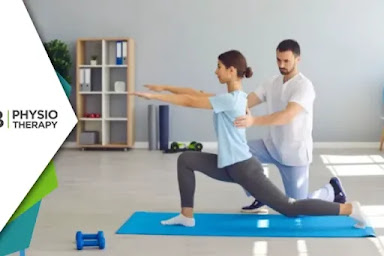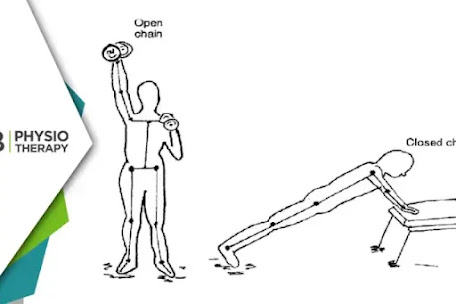In the evolving world of physiotherapy, various techniques are continuously being explored to improve treatment outcomes for patients. One such innovative method is electrical dry needling (EDN). This advanced version of traditional dry needling offers physiotherapists an effective tool to treat musculoskeletal pain, promote healing, and restore function. In this blog, we’ll explore what electrical dry needling is, its uses, and how it benefits the conditions commonly treated by physiotherapists.
What is Electrical Dry Needling?
Electrical dry needling involves inserting thin, filiform needles into specific trigger points or muscles, which are then connected to a low-frequency electrical stimulation device. This combination amplifies the therapeutic effects of dry needling by providing targeted muscle stimulation and promoting deeper muscle relaxation.
Unlike acupuncture, which focuses on energy pathways, dry needling specifically targets muscular and connective tissues involved in pain and dysfunction. When combined with electrical stimulation, the technique is believed to enhance local circulation, reduce muscle spasms, and stimulate nerve healing.
How Does Electrical Dry Needling Work?
Electrical dry needling works by creating a localized response in the muscle and nerve tissue. The electrical impulses delivered through the needles cause involuntary muscle contractions, known as a “twitch response.” This helps reset the muscle, releasing tension and stimulating blood flow to the area. The result is a reduction in muscle tightness, pain, and inflammation, ultimately aiding recovery.
In addition to its effects on muscle fibers, the electrical stimulation may also influence the nervous system, modulating pain signals and promoting the release of endorphins, the body’s natural painkillers.
Conditions Treated by Electrical Dry Needling in Physiotherapy
Electrical dry needling has proven to be beneficial for a wide range of musculoskeletal conditions. Here are some of the most common conditions treated by physiotherapists using this technique:
1. Myofascial Pain Syndrome
Myofascial pain syndrome is characterized by the presence of trigger points-hyperirritable spots within muscles that can cause referred pain. Electrical dry needling can effectively deactivate these trigger points, relieving pain and improving muscle function.
2. Chronic Neck and Back Pain
Patients with chronic neck or back pain often have deep muscle tension and spasm that can be difficult to treat with manual therapy alone. Electrical dry needling reaches these deeper layers of muscle tissue, providing relief from persistent pain and improving range of motion.
3. Tendinopathies
Tendinopathies, such as Achilles tendinitis or tennis elbow, involve degeneration of tendon tissue. Electrical stimulation through dry needling promotes tissue healing and regeneration, while reducing pain and inflammation in the affected area.
4. Muscle Spasms
Spasms caused by injury or overuse can lead to muscle tightness and discomfort. Electrical dry needling helps relax these overactive muscles by inducing twitch responses, which lead to immediate relaxation and pain relief.
5. Joint Dysfunction
Muscle tightness and imbalance around joints can lead to limited mobility and joint dysfunction. Physiotherapists use electrical dry needling to target these muscles, improving joint movement and reducing discomfort in conditions such as frozen shoulder or knee osteoarthritis.
6. Sports Injuries
Electrical dry needling is commonly used to accelerate recovery from sports injuries like muscle strains, ligament sprains, and overuse injuries. By enhancing local circulation and reducing inflammation, the technique promotes faster tissue repair and reduces the risk of further injury.
7. Headaches and Migraines
For patients with tension-type headaches or migraines caused by muscle tension in the neck and shoulders, electrical dry needling can help alleviate the underlying muscular dysfunction, reducing the frequency and severity of headaches.
Benefits of Electrical Dry Needling for Physiotherapy Patients 1. Pain Relief
Electrical dry needling provides rapid and long-lasting relief from both acute and chronic pain by targeting the root cause of muscle tension and inflammation.
2. Improved Muscle Function
By reducing tightness and restoring muscle balance, electrical dry needling improves overall muscle function, leading to better movement and posture.
3. Enhanced Healing
The electrical stimulation encourages local blood flow and tissue repair, making it a valuable tool in injury recovery and rehabilitation.
4. Minimally Invasive
EDN is a minimally invasive technique with low risk, making it suitable for a wide range of patients, from athletes to individuals recovering from surgery or injury.
5. Reduced Reliance on Medication
For patients seeking natural alternatives to pain relief, electrical dry needling offers a drug-free solution to managing pain and dysfunction.
This modern approach can help you achieve a quicker recovery and return to your daily activities with less discomfort and greater ease. By combining traditional dry needling with electrical stimulation, physiotherapists can offer their patients enhanced pain relief, improved muscle function, and accelerated recovery.




